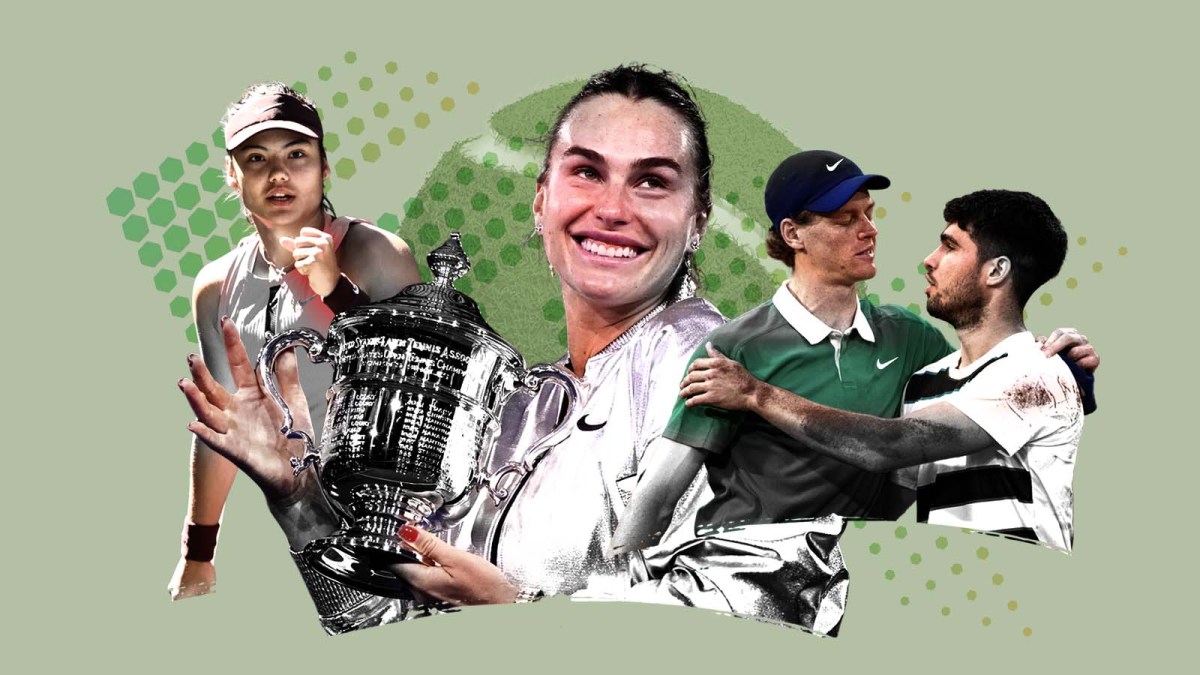Tennis’s world rankings, in my opinion, are a very good barometer of performance over the course of a season, so the ATP’s points system has it spot on in rating Carlos Alcaraz as the year-end No1. There were questions surrounding the 22-year-old Spaniard’s ability to be consistent week in, week out on the tour, but he elevated himself to a new level with a total of eight ATP titles, including the French Open and US Open, and 71 match wins.
There are some who argue that Jannik Sinner would have comfortably finished No1 had he not been absent for three months serving a ban for an anti-doping violation. The 24-year-old Italian is only 550 points behind Alcaraz despite missing out on the chance to play in tournaments worth an approximate total of 4,500 points. But a drugs ban should be considered very differently from injury, with no subjective leniency.

Alcaraz won the French and US Opens in 2025… but lost out to Sinner at Wimbledon
TIMES PHOTOGRAPHER MARC ASPLAND
Female player of the year: Aryna Sabalenka
Again, the rankings do not lie. Aryna Sabalenka was the most reliable performer on the WTA tour, finishing the year as she started it at the summit of women’s tennis. The 27-year-old won four titles, the most notable of which was her fourth grand-slam trophy at the US Open.
There was, however, a string of near misses, which will give those chasing Sabalenka some hope going into next year, with emotional meltdowns in the finals of the Australian Open and French Open. Best placed to take advantage of any more dips in concentration is Iga Swiatek, who produced one of the most ruthless wins of the year in beating Amanda Anisimova 6-0, 6-0 in the Wimbledon final.

Sabalenka had another excellent year, but she is vulnerable to wobbles, which other players are well set to take advantage of
STR/NURPHOTO VIA GETTY IMAGES
Best match: men’s French Open final
Working in tennis for the past 15 years, I have been very fortunate to witness some of the best matches ever contested. A golden era of dominance between Novak Djokovic, Rafael Nadal and Roger Federer produced some clashes of epic proportions, but I am not sure I can recall ever letting out so many audible gasps as I did on the final Sunday at Roland Garros in June.
Even now it is hard to find the words that do justice to everything involved in the longest-ever French Open final, between Alcaraz and Sinner over the course of five hours and 29 minutes: the shot quality, the physicality, the speed, the atmosphere and, most important of all, the comeback. Somehow, Alcaraz recovered from two sets down, saving three championship points, for what may well prove to be the greatest match of his career.

The burgeoning rivalry between Sinner, left, and Alcaraz went to a new level this year, with the two disputing one of the greatest finals of modern times at Roland Garros in June
JULIEN DE ROSA/AFP VIA GETTY IMAGES
Best achievement: Italian dominance
Much has been said and written about the downfall of the Davis Cup after the withdrawal of Jannik Sinner and Lorenzo Musetti for rest instead of national duty on home soil, but it says something for the strength of Italian tennis that the B team still won the “World Cup of tennis”. All credit to Flavio Cobolli and Matteo Berrettini for stepping up and delivering in front of a passionate crowd in Bologna.
After September’s victory for the women in the Billie Jean King Cup, Italy are now on a run of five consecutive world team titles stretching back to the 2023 Davis Cup. It is a reward for the vision and belief of the Italian national federation president Angelo Binaghi, who has ploughed investment over 24 years into tournaments, coaching and the club culture to put tennis’s popularity second only to football in the country.
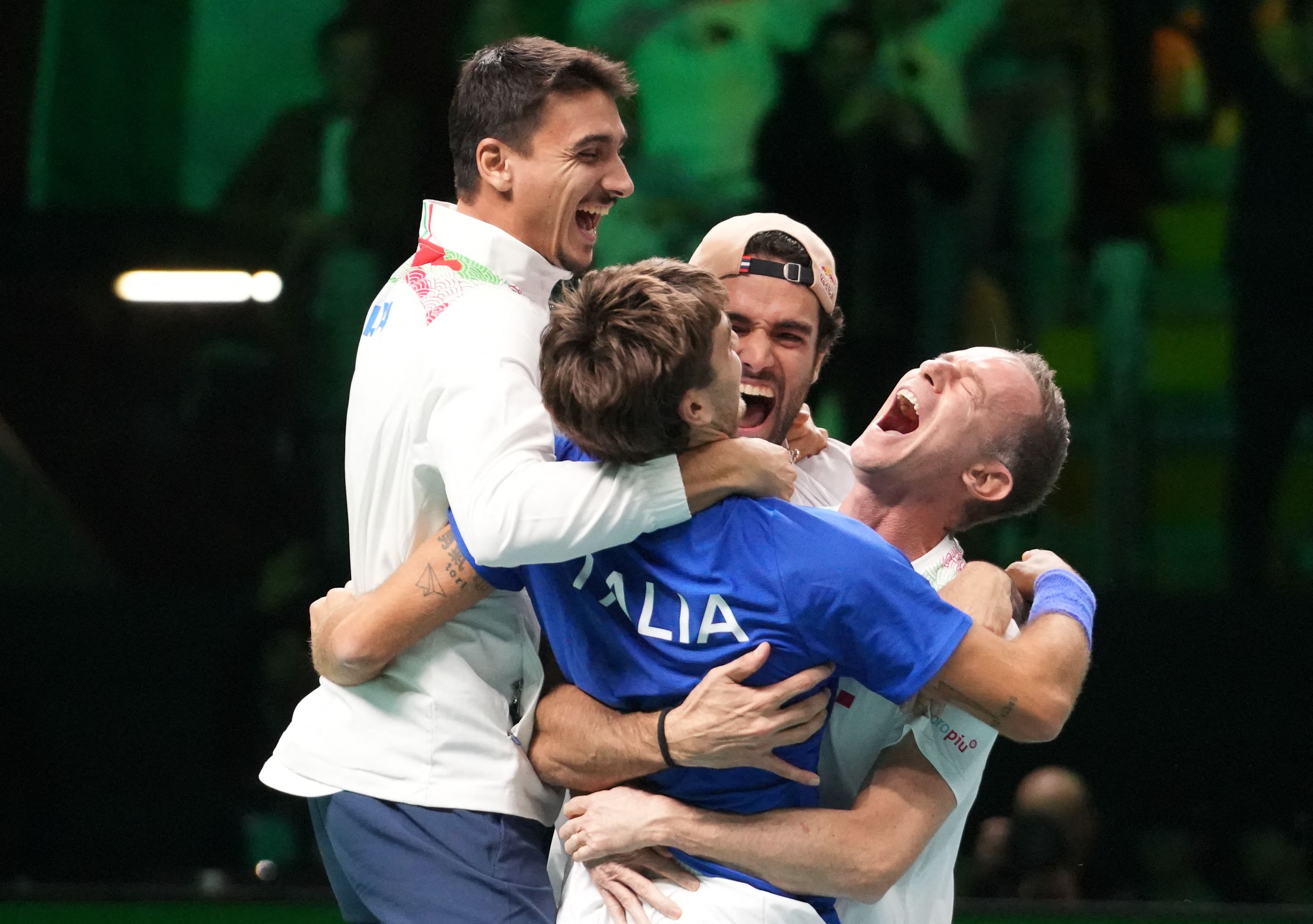
Team Italy celebrate after winning the country’s third straight Davis Cup in Bologna
LAIRYS LAURENT/ABACA/SHUTTERSTOCK
Best breakthrough: Lois Boisson
I have to admit, the first time I wrote about France’s Lois Boisson came in the aftermath of the controversial comments made by Great Britain’s Harriet Dart, when she asked the umpire to request that Boisson put on deodorant during a match at the Rouen Open in April. Accused of smelling “really bad”, Boisson took it well by making light of the incident on her social media with an edited photo holding a can of Dove deodorant.

Boisson put together an astonishing run at her home tournament
ANTONIO BORGA/EURASIA SPORT IMAGES/GETTY IMAGES
Six weeks later, the unheralded 22-year-old world No 361 was lapping up the adulation of her home crowd with a stunning run to the semi-finals of the French Open. Boisson then won her first WTA title at the Hamburg Open in July and is now primed to push on next year at a ranking of No36.
Best Briton(s): Julian Cash and Lloyd Glasspool
The rise of doubles in Britain over the past 20 years, overseen by the respected guru Louis Cayer, means that we wrongly take strong performances on the pairs circuit for granted these days. But, after a series of victories for British players alongside foreign partners through the years, there has been another significant development this year in the establishment of an all-British tour-leading team.
Julian Cash, 29, and Lloyd Glasspool, 32, are the year-end world No1s after a tremendous season in which they claimed seven ATP tour titles. The highlight came in July at Wimbledon, where they were the first home duo to win the men’s doubles since Pat Hughes and Raymond Tuckey in 1936.
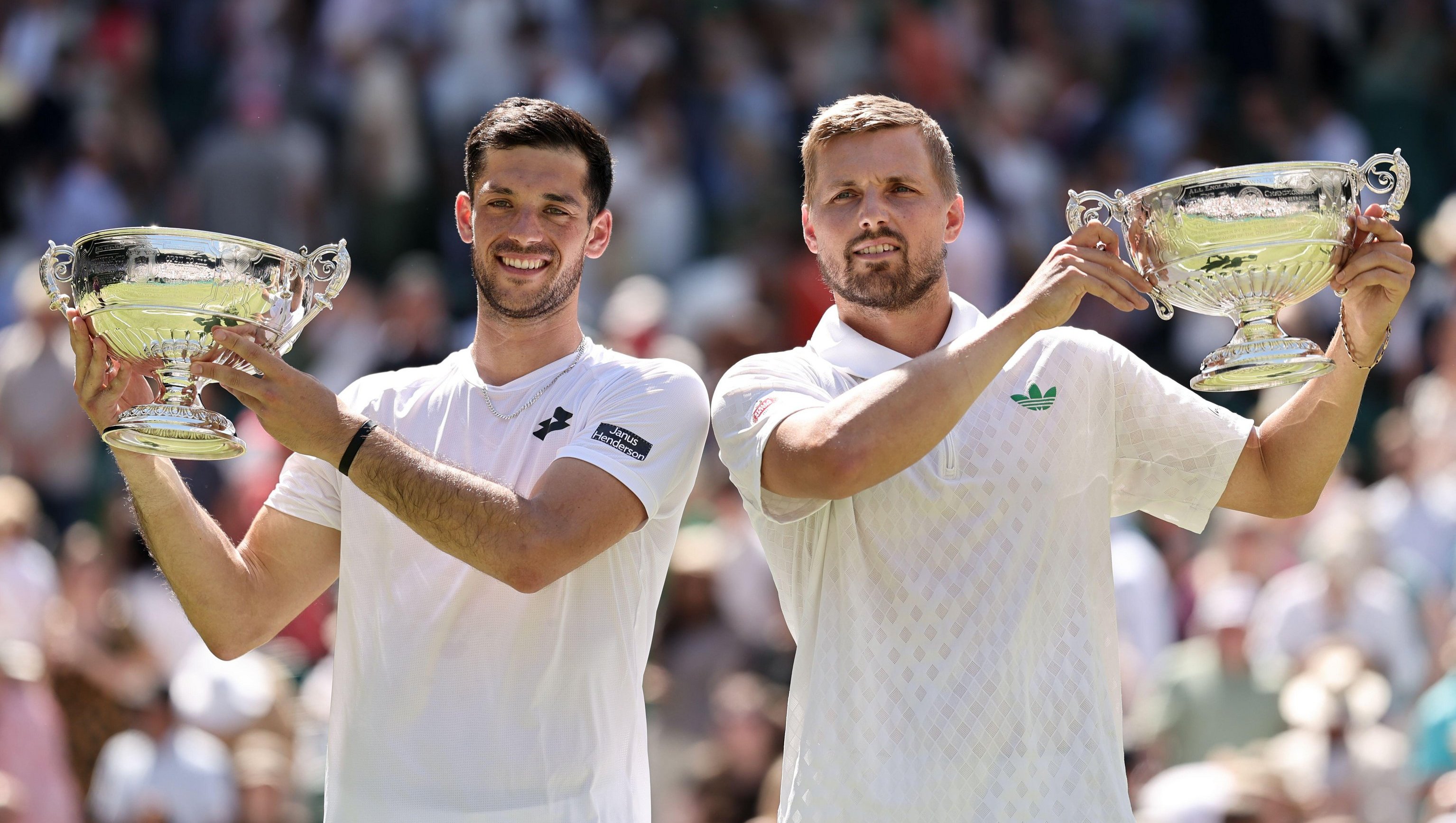
Cash, left, and Glasspool lift the men’s doubles trophies at Wimbledon
ALAMY
Biggest controversy: French Open night sessions
One of the most infuriating moments of the year has actually become an annual occurrence. Once again, French Open organisers brought shame upon their tournament by scheduling no women’s matches in 11 prime-time night sessions. This means that female players have only featured in two of 53 sessions — and none since 2023 — since the one-match slot was introduced in a separate rights deal for Amazon Prime in 2021.
It has now become tiring to hear the tournament director Amélie Mauresmo — herself a former world No1 — wheel out the same excuses year after year about the format causing issues, with longer matches near guaranteed in the men’s best-of-five-set draw compared to the best-of-three-sets in the women’s event. Accusations of sexism at the French federation will continue if a solution to this flawed one-match session is not found in 2026.
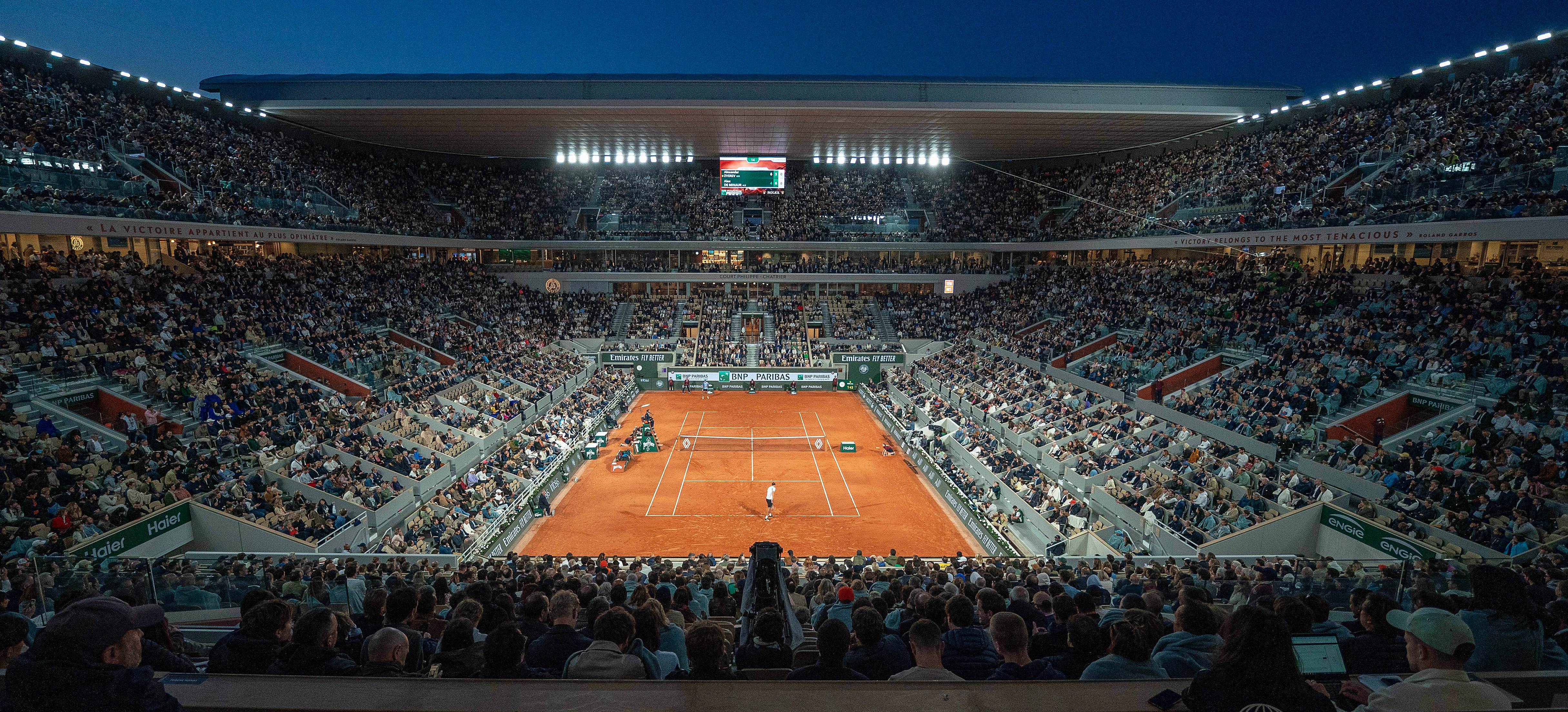
Organisers at Roland Garros do not view the women’s tournament as worthy of the prime-time evening slot
SUSAN MULLANE-USA TODAY SPORTS
Biggest disappointment: Emma Raducanu’s withdrawal
Emma Raducanu has done plenty right this year. Starting at a world ranking of No61, she ends it at No29 and is on course for an Australian Open seeding after winning 28 of 50 matches. Overall, there have been clear physical improvements to reduce the number of regular niggles and signs of stability are emerging on the coaching side with her Spanish mentor Francisco Roig, formerly of Rafael Nadal’s team.
The manner, though, in which Raducanu handled her withdrawal from the Billie Jean King Cup finals in September was poor. The 23-year-old British No1 initially committed to the LTA in July before deciding at the start of September that she would instead take up a wild card for the concurrent Korea Open. This was no random qualifier in Timbuktu, it was the showpiece finals in which Britain were bidding to win a first-ever title. Individual goals should have been set aside for a week to honour a commitment.

Raducanu hardly covered herself in glory by failing to fulfil a commitment with Great Britain
PEDRO PARDO/AFP VIA GETTY IMAGES
Biggest lesson to learn: Hawk-Eye Live at Wimbledon
Electronic line calling (ELC) has been used in tennis for five years, yet there was always going to be more scrutiny of the system in its first appearance at Wimbledon. With well-dressed human line judges making way for computers at the All England Club, this was always going to be an emotive topic that would cause much debate amongst the Britons who only take proper notice of tennis for two weeks a year. As a result, any glitches received far more coverage than usual, while both Raducanu and Jack Draper even went as far as questioning the quality of the technology.
Ultimately there will be no reversion next year as it is proven that ELC is generally more accurate than the human eye. But more attention should be directed towards the spectator experience, with several ticketholders complaining that it was not always clear whether the ball landed in or out. This is a common issue across the tour and a visual cue should be uniformly introduced now that we no longer see the arms of line judges being stretched out wide.
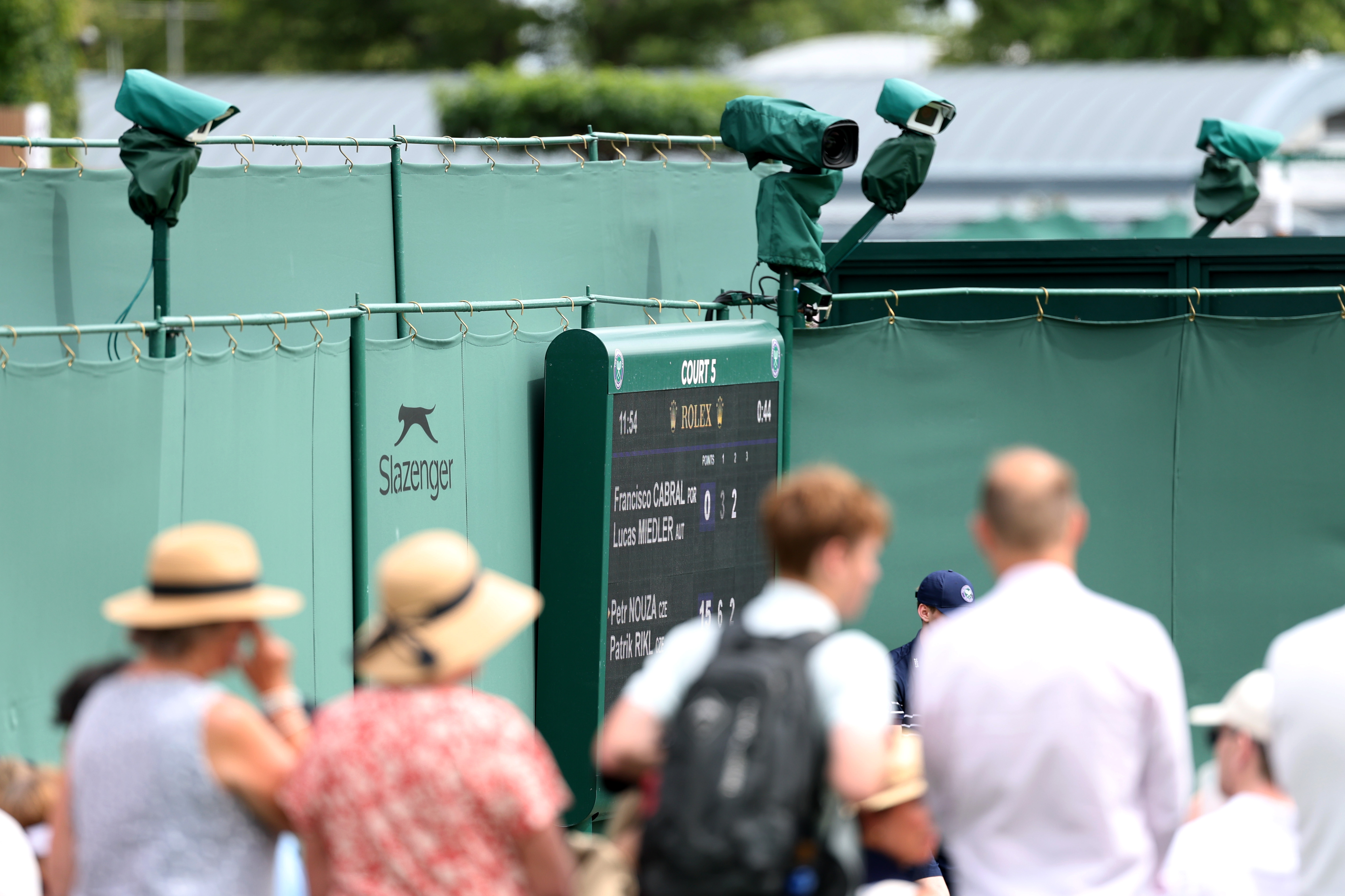
The conspicuous absence of line judges and reliance on technology caused plenty of controversy at this year’s championships
EZRA SHAW/GETTY IMAGES
Most heartwarming story: The Shanghai fairytale
To finish on a positive note, there is no beating the storyline that developed during the Shanghai Masters. I would need another 800 words at least to tell the full tale, but essentially there were two cousins who both produced the best performances of their career at the same time to meet in the final.

Vacherot beat his cousin Rinderknech 4-6, 6-3, 6-3 in one of the sporting stories of the year
HECTOR RETAMAL/AFP VIA GETTY IMAGES
While France’s Arthur Rinderknech, 30, was more established at a ranking of No54, his Monegasque cousin Valentin Vacherot, 27, was well outside the ATP tour at No204 when he chanced his luck and flew to Shanghai as an alternate hoping for a few withdrawals in qualifying. Nine wins later, including a semi-final victory over the great Novak Djokovic, Vacherot was the champion and can now look forward to joining Rinderknech on the tour full-time in 2026.

